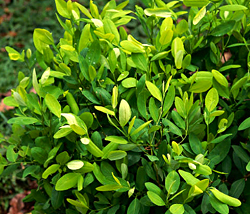DK Science: Medicinal Plants
Many plants produce special substances in their roots, leaves, flowers, or seeds that help them to survive. For example, some plants make nasty-tasting substances to defend themselves against plant-eating animals. Since earliest times, people have gathered these substances to create herbal medicines to treat certain diseases. Many of the powerful drugs used in modern medicines originated in plants. Today’s plant-based drugs treat a range of diseases, from headaches to cancer.
Rainforest people possess valuable knowledge about medicinal plants. With proper research, scientists believe they might find cures for some of the world’s deadliest diseases among rainforest plants. Some of these plants have not even been discovered yet. Unfortunately, rainforests are being destroyed. As they disappear, so do thousands of possible life-saving drugs.
Aloe vera is the thick juice of the aloe, a type of plant that comes from tropical Africa but is also cultivated elsewhere. The juice contains a chemical called alonin, that has been used in cosmetics and medicine. Its healing properties have made it especially useful as an ingredient for lotions and gels that soothe burns, including sunburn. It can also be used to repel biting insects.
Also known as toothpickweed, this Mediterranean herb contains a chemical that opens up blood vessels, improving blood flow to the heart, and opens the breathing tubes of the lungs. The chemical has been used in medicines to treat asthma and angina (pain due to heart problems).
The Madagascar periwinkle is the source of drugs used to treat diabetes and certain cancers, such as Hodgkin’s disease and acute leukaemia. The drug for treating Hodgkin’s disease has increased patients’ chances of survival from one-in-five to nine-in-ten.
The bark of this tropical tree contains a drug called quinine. Quinine is used in the prevention and treatment of malaria, a deadly disease carried by mosquitoes. Malaria is responsible for thousands of human deaths around the world every year.
This little plant contains a chemical called colchicine, which has been used to treat rheumatism and gout. As it tends to prevent cells from dividing too quickly, colchicine has also been used to suppress some types of cancer
The coca plant grows naturally in South America and is the source of the drug cocaine. Although cocaine can be abused and is associated with addiction, it has also been used responsibly by doctors as a local anaesthetic and for pain relief.
Opium is a pain-killing drug extracted from the unripe seed pods of the opium poppy. In 1806, a German scientist isolated the drug morphine from opium. Morphine and its derivatives, such as heroin and codeine, remain important pain relievers.
Meadowsweet is a European wildflower that grows in wet soils and marshes. It has been used for pain relief in the treatment of many conditions, including headaches, arthritis, and rheumatism.


